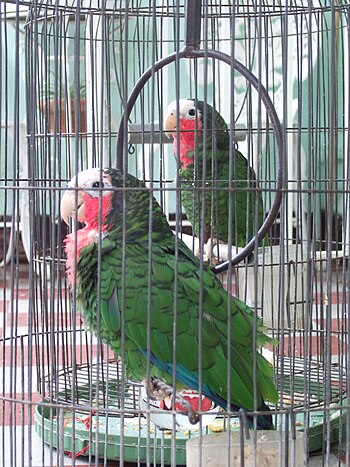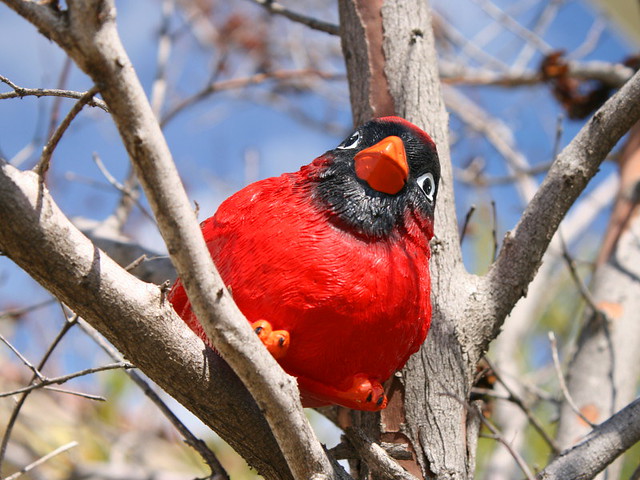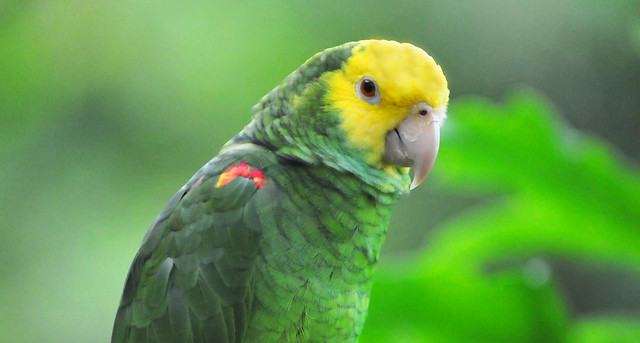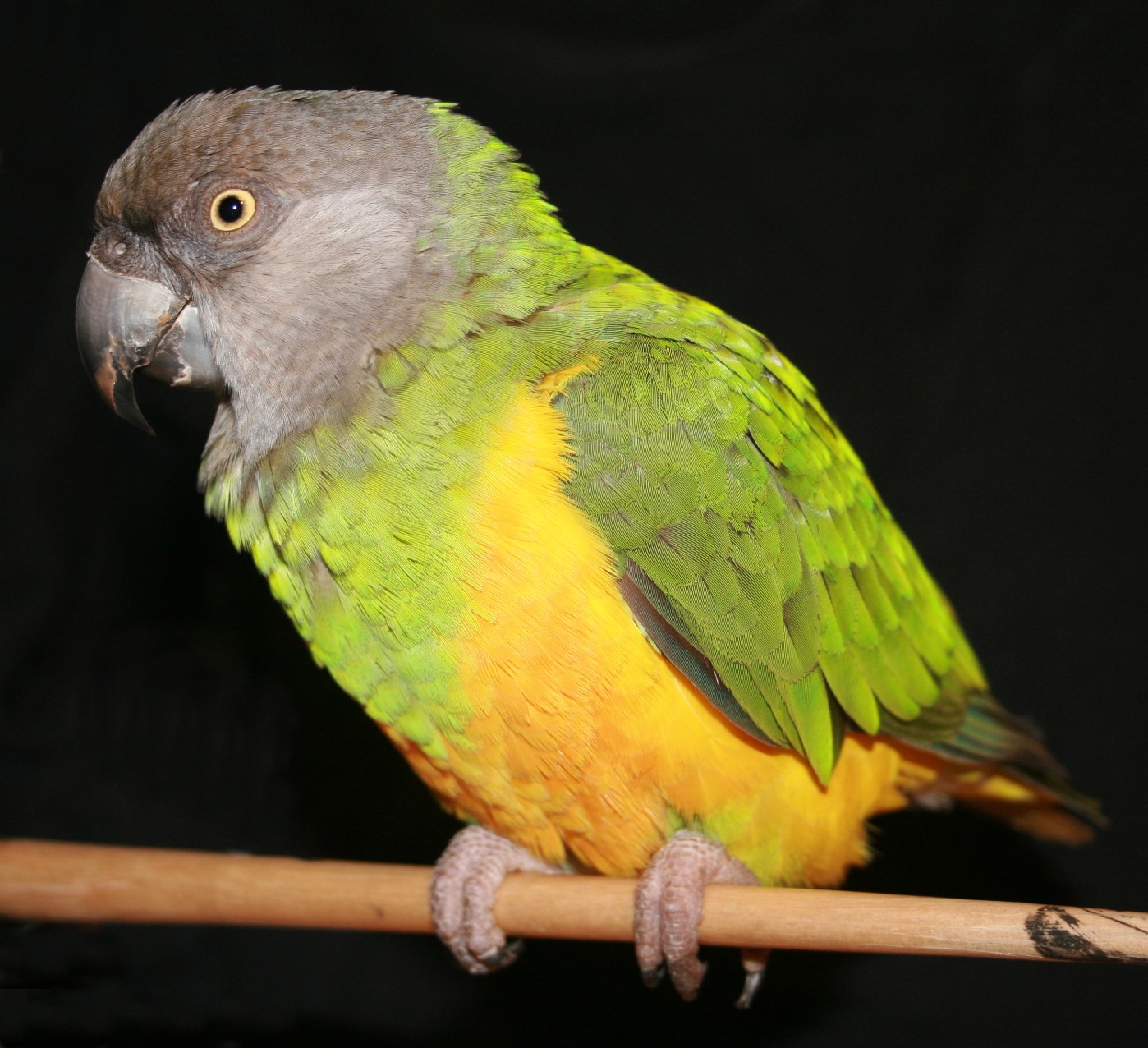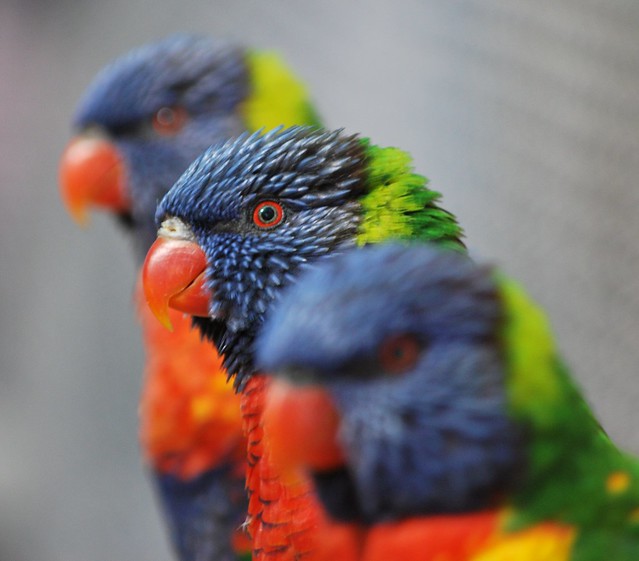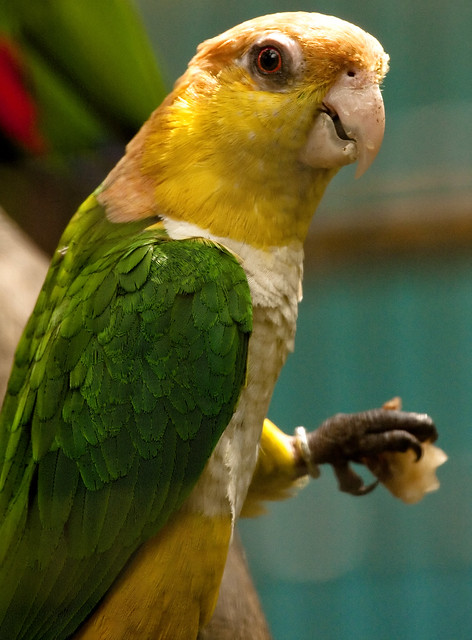 |
| White-bellied Caique - Photo by petepictures |
What do they look like?
There are 2 main species--the Black Headed Caique (BHC), and the White Bellied Caique (WBC). The Black Headed Caique, as you might suspect, has a shiny black head, black beak, and feet, a dark green back, wings, and tail, with orange feathers under the tail and on the legs. It also has a striking band of orange around its neck. The White Bellied Caique is similar except that it has a yellow head, light-colored beak, green legs with yellow feathers under its wings. Both have white bellies. They are both visually striking with no noticeable difference in personality.
How big are they?
As adults, they weigh in at approximately 170 grams or 6 ounces and are generally 8 to 9 inches in length.
How much do they cost?
These little birds are surprisingly affordable and cost between $500 and $1000 USD. The Black Headed Caiques are slightly more common and tend to be less expensive than the White Bellied Caiques.
How noisy are they?
This question can produce a different answer from each person you ask so the most accurate answer for you will depend largely on your tolerance level and the individual bird. They can produce a loud screeching sound when they want food or attention from their humans. But this is not usual nor does it last for long periods of time. You can curtail this behavior by covering their cage until they are quiet. A more usual sound is pleasant chattering. Spend time around the bird during different times of day to experience for yourself how loud the bird you're considering really is.
How well do they speak?
Most can learn to speak and enjoy learning to whistle songs. Short training sessions that are frequent, consistent and fun for your bird will produce the best results. However, the only real way to tell whether your bird particular bird will speak or whistle is to hear it do so before you buy it.
What kind of cage and toys do they need?
Even though they are small birds, they need are fairly large cage because they are so active. The bigger the cage the better, but the minimum size should be 24" high by 24' wide by 24" deep. They love to chew, so be sure to provide a variety of wooden toys and fresh green branches. They also love to be in motion so toys that move are sure to be a hit. Swings, ropes, ladders are all good choices. Inspect toys regularly and remove promptly when they are no longer safe. They should be let out of the cage daily for additional exercise.
What are their dietary needs?
Caiques love to eat and fortunately, their food needs are simple and uncomplicated. Offer fresh fruits, and vegetables (organic is best to avoid pesticides), sprouted seeds, and table foods, supplemented with a high-quality pellet mix. Make sure fresh water is available constantly. Avoid avocado, caffeine, chocolate, alcohol as they are toxic. Like many parrots, they are susceptible to airborne diseases and benefit greatly from having their air filtered with a high-efficiency particle arresting (HEPA) air purifier.
love to eat and fortunately, their food needs are simple and uncomplicated. Offer fresh fruits, and vegetables (organic is best to avoid pesticides), sprouted seeds, and table foods, supplemented with a high-quality pellet mix. Make sure fresh water is available constantly. Avoid avocado, caffeine, chocolate, alcohol as they are toxic. Like many parrots, they are susceptible to airborne diseases and benefit greatly from having their air filtered with a high-efficiency particle arresting (HEPA) air purifier.
By Debbie Davis
An excellent HEPA air purifier to remove airborne pollutants from your Caique's air is offered by PurerAir.com-- the Bird Dander Purifier See it now at -http://purerair.com/bird_dander_air_purifier.html
Article Source: EzineArticles
|


